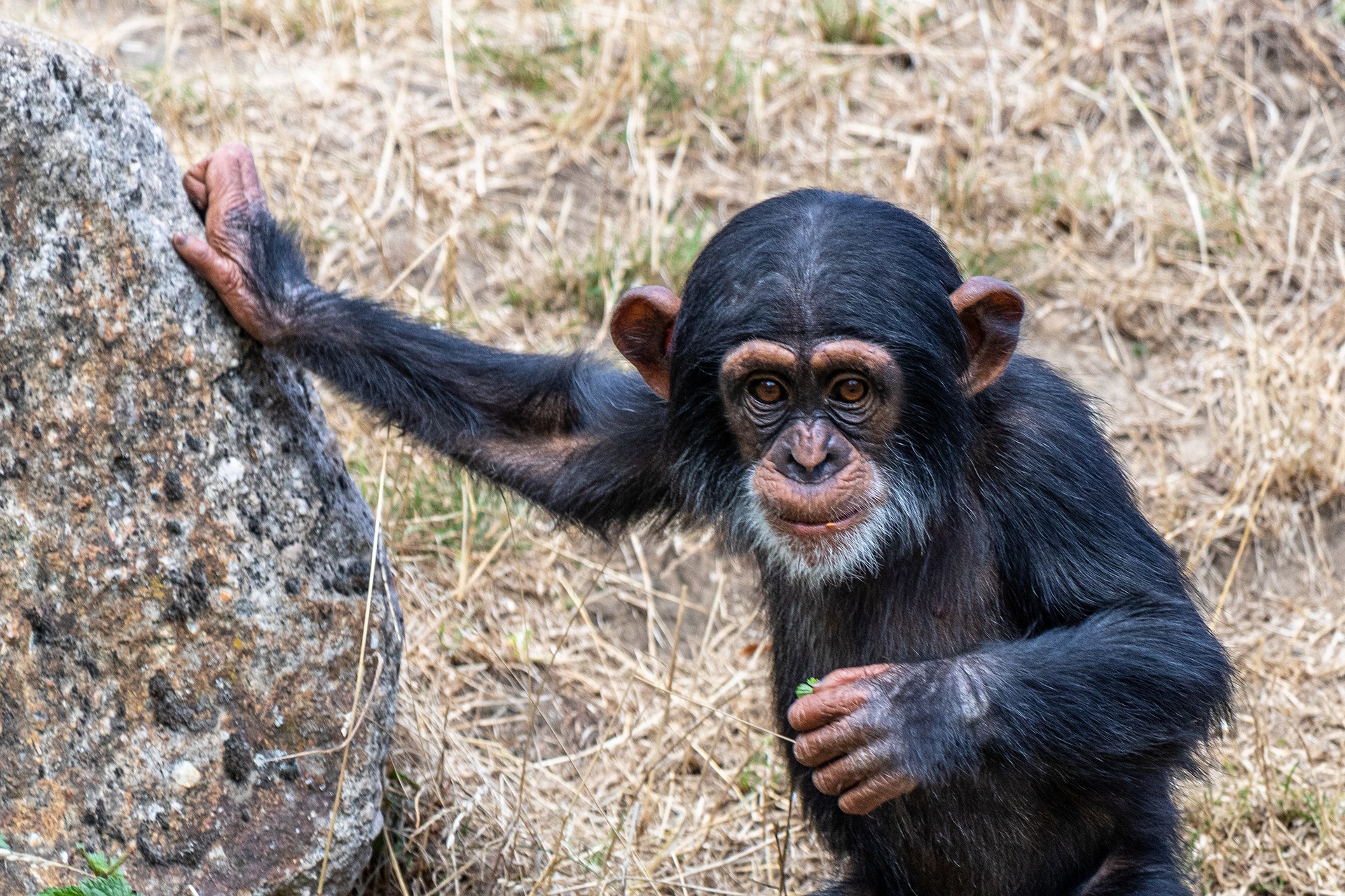Media release
From: Cell PressResearchers design a method to pinpoint the origin of illegally traded chimpanzees
Researchers reporting in the journal Cell Genomics on June 1 have produced the first catalogue of genomic diversity for endangered chimpanzees in the wild. The catalogue, which includes 828 chimp samples from across their range, offers a detailed reconstruction of chimp population structure and fine-scale patterns of isolation, migration, and connection. The researchers use this information to design a method to link confiscated chimpanzees to their place of origin within about 100 kilometers, with the goal to support efforts to combat the illegal trade of chimpanzees and related products.
“Chimpanzees are an endangered species with massive population declines in recent years,” said Claudia Fontsere, first author of the study at the Institute of Evolutionary Biology (IBE), a joint centre of CSIC and Universitat Pompeu Fabra (UPF) in Barcelona, Spain. “Our efforts to describe the current genomic diversity of this species are an attempt to provide a fine-scale map of connectivity between populations that can be of service to conservationists as a baseline and guide to build upon their conservation efforts.”
The effort would not have been possible without coordinated sampling of thousands of chimp fecal samples by the Pan African Program (PanAf) at 48 locations together with years of effort to develop methodological strategies to efficiently retrieve and enrich the proportion of host DNA in fecal samples, the researchers say. Fecal samples come with many technical challenges as they contain only small amounts of degraded chimpanzee DNA, but they also have advantages for the study of endangered species as they allow for extensive collection with minimal interference to the animals. These approaches can now be put to work to study many other endangered primates and other species.
“Since we are using sequencing of a whole chromosome with thousands of independent markers, compared to few microsatellite markers, we have a much broader view of the genome that is needed to refine and describe the very complex evolutionary history of chimpanzees,” adds Tomas Marques-Bonet, principal investigator from the Institute of Evolutionary Biology (IBE) and co-lead of the study. “Impressively, we are doing it with non-invasive samples, which, in a sense, are the best of all worlds—a valuable source of genomic DNA but collected in a way that animals never need to be contacted or disturbed beyond researchers existing in their habitat.”
Because the fossil record and ancient DNA for chimps is limited, the only way to reconstruct their past is through studies of living individuals. Scientists recognize four chimp subspecies, but questions had remained about their relationships. There have been long-standing questions about how connected those subspecies are and have been to each other.
To explore these questions in the new study, Fontsere and colleagues retrieved partial genome information from more than 800 non-invasively-collected wild chimpanzee fecal samples from across their current range. They focused their attention on chromosome 21, the smallest contiguous nuclear sequence in the chimpanzee genome and a source for a wealth of genomic sequence data for use in inferring chimpanzee population structure.
“Just by our sampling method, we have discovered around 50% more, and new, genetic variants on chromosome 21 than previous studies,” Fontsere said. “Our dataset has been key in understanding recent and past gene flow between populations where previous sampling gaps impeded their study. Also, it has allowed us to describe if populations have been isolated recently or whether there was a historical event that did so. By characterizing the genomic singularities of each community or population, we also created a map that links genomic information to geographic location so that we were able to devise a strategy to infer the geographic location of chimpanzee individuals.”
Previously, only 59 whole chimpanzee genomes had been sequenced with limited information on their origin, the researchers note. Large datasets from thousands of geo-referenced fecal samples also exist, but they represent only very small fragments of the entire genome. With these new samples and genomic data, they’ve been able to fill the previous gaps in the distribution of Eastern and Central chimpanzees.
Fontsere says they’ve also provided a more nuanced understanding of the genetic differentiation of the four recognized chimpanzee subspecies. They found a link between historical population structure, barriers of genetic continuity between chimpanzee populations, and geographical barriers such as rivers and lakes.
“We were able to show, using different analyses that look at very old and more recent variation, that the history of chimpanzees is complex, much like that of our own species,” says Mimi Arandjelovic, co-lead of the study from the Max Planck Institute for Evolutionary Anthropology, iDiv, and Leipzig University. “Chimpanzee subspecies were indeed separated in the past but have since also experienced genetic exchange between populations. This nicely explains why different studies aiming at reconstructing different ancestral periods have come to different conclusions about the evolutionary history of chimpanzees.”
Among many other insights, the evidence also reveals extensive connectivity in Western chimpanzees.
“This is so critically important to their conservation and really argues that connectivity between forests across Western Africa, especially in the northern region, needs to be preserved for the protection of these populations and the subspecies,” said Marques-Bonet.
The researchers say they are now beginning to use the methods they’ve developed for chimpanzees with other great apes and primates. Their findings in chimpanzees confirm that fecal samples, although more complex than blood samples, are a fine source of host DNA for any species.
The PanAf also continues to analyze data collected over 8 years from 18 countries across Africa, at over 40 temporary and long-term research and conservation sites. The goal is to understand the evolutionary and ecological drivers of chimpanzee cultural and behavioral diversity. Anyone interested can pitch in and help by annotating videos at the citizen science project https://www.zooniverse.org/projects/sassydumbledore/chimp-and-see.


